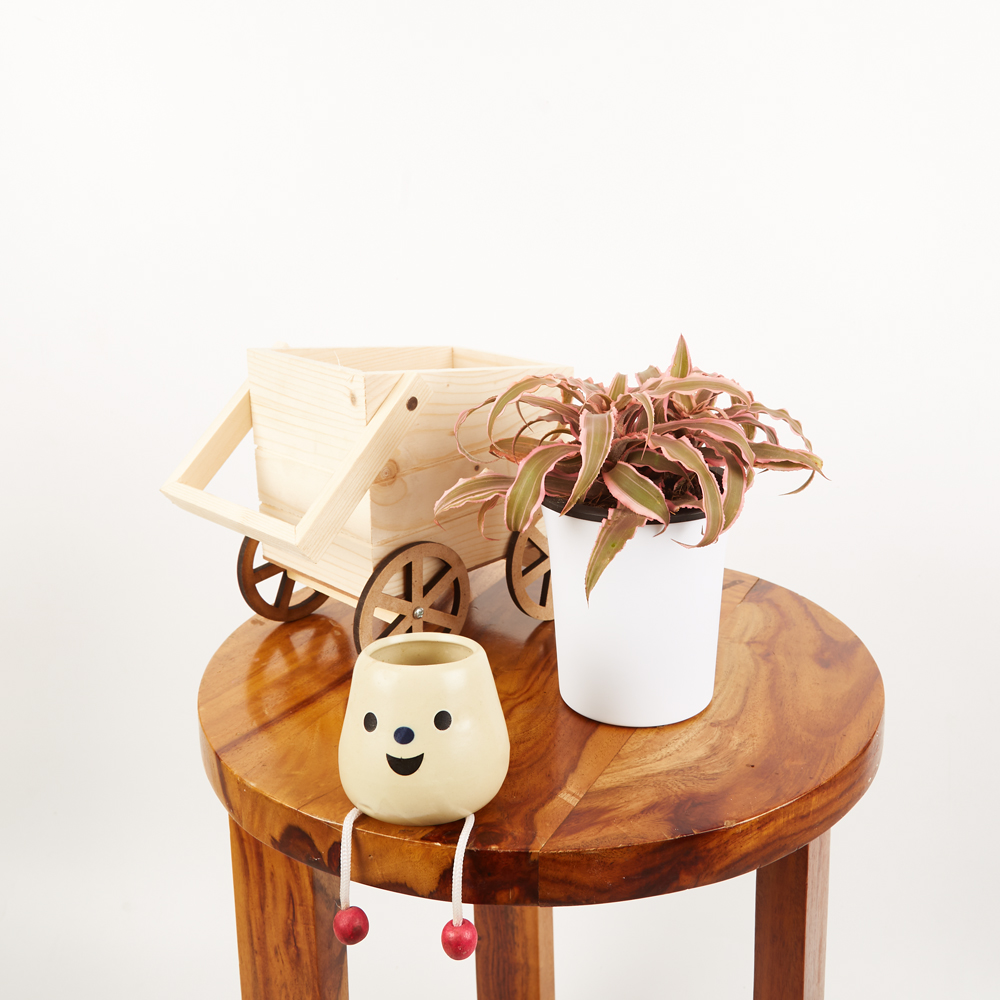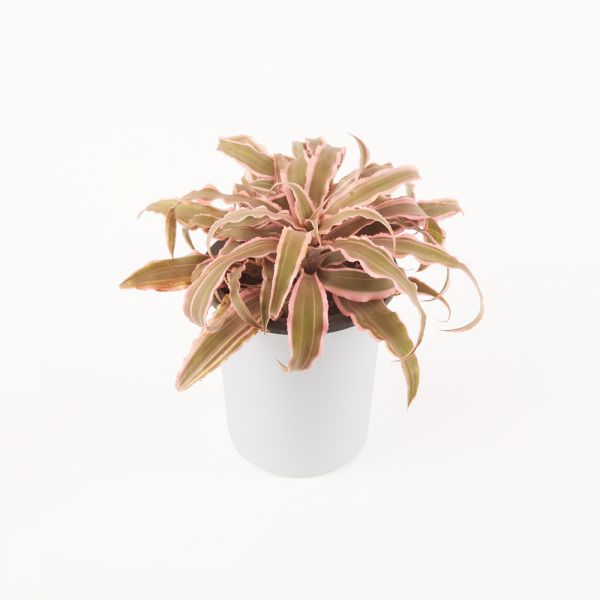
Description
Bromeliads are native to tropical North and South America. This Earth Star Bromeliad--also know as Cryptanthus--features a silky pink edged stencil filled in with a near rustic green to provide just that bit of chicness to your space. Easy to care for, their soil should dry out between waterings and they love bright, indirect light.

Botanical Name
Cryptanthus bivittatus
Common Name(s)
Cryptanthus |

Description
Bromeliads are native to tropical North and South America. This Earth Star Bromeliad--also know as Cryptanthus--features a silky pink edged stencil filled in with a near rustic green to provide just that bit of chicness to your space. Easy to care for, their soil should dry out between waterings and they love bright, indirect light.

Botanical Name
Cryptanthus bivittatus
Common Name(s)
Cryptanthus |

Description
Bromeliads are native to tropical North and South America. This Earth Star Bromeliad--also know as Cryptanthus--features a silky pink edged stencil filled in with a near rustic green to provide just that bit of chicness to your space. Easy to care for, their soil should dry out between waterings and they love bright, indirect light.

Botanical Name
Cryptanthus bivittatus
Common Name(s)
Cryptanthus |


Description
Bromeliads are native to tropical North and South America. This Earth Star Bromeliad--also know as Cryptanthus--features a silky pink edged stencil filled in with a near rustic green to provide just that bit of chicness to your space. Easy to care for, their soil should dry out between waterings and they love bright, indirect light.

Botanical Name
Cryptanthus bivittatus
Common Name(s)
Cryptanthus |
Know before you sow
Step by Step Growth Guide

1. Sowing


2. Nurturing



















